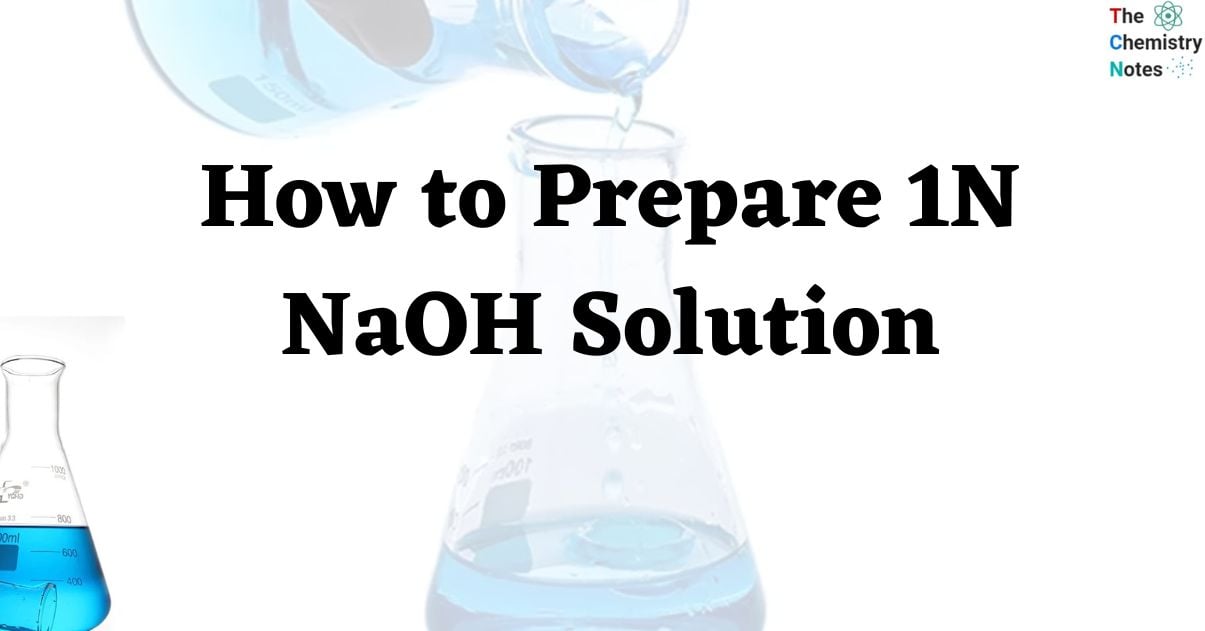
Sodium hydroxide, often known as lye and caustic soda, is an inorganic substance with the chemical formula NaOH. The substance in question is a white-colored solid ionic compound. It comprises sodium cations (Na+) as well as hydroxide anions (OH–). Sodium hydroxide is a kind of solid ionic material.
This inorganic chemical is used as a buffering agent in the cosmetics industry. It also has the capacity to adjust pH levels. Sodium hydroxide has a pH of 13. Caustic soda is another name for sodium hydroxide. It is a frequent component in cleaning agents and cleaning solutions. Sodium hydroxide is a colorless and odorless chemical at ambient temperature. The liquid form of sodium hydroxide is colorless and odorless. The material is extremely reactive to strong acids as well as water.
| Molecular Weight of NaOH | 39.997 g/mol |
| Melting Point | 318 °C |
| Boiling Point | 1388 °C |
| Density | 2.13 g/cm3 |
Interesting Science Videos
Equivalent Weight of NaOH
The concentration of acid or base in a solution is measured using normality (N). Molarity & normality are related because molarity assesses the concentration of ions and compounds in a solution, whereas normality represents the molar concentration of an acid or basic component.
The amount of protons (H+) or hydroxides (OH–) that react with each other determines the normality of an acid-base reaction. Consider a 1 M solution of sodium hydroxide, NaOH. The number of moles of protons in the solution is the normality. Because in NaOH, each molecule contains one proton, the normality is 1 N.
To determine how many grams of sulfuric acid you will need, you will first need to calculate the equivalent weight of NaOH. We can calculate the equivalent mass using the following equation:
Equivalent weight = (molecular weight)/(number of equivalent moles)The molecular weight of NaOH is 39.977 g/mol.
The number of acid hydrogen in the compounds is 1.
or, Equivalent weight = 39.977 g/mol/1 = 39.977
Therefore, the Equivalent weight is 39.977 g/mol.
Required Mass of NaOH
Determine the quantity of sodium hydroxide (NaOH) required to produce the desired volume of solution.
To find the right amount of sodium hydroxide to be used (NaOH), we may apply the following formula:
Grams of compound needed = (N desired) x (equivalent mass) x (volume in liters)Desired N is 1,
The equivalent mass is 39.977 g/mol
Grams of compound needed = (N desired) x (equivalent mass) x (volume in liters)
Grams of compound needed = 1N x 40 x 1 litre = 40 grams
Therefore, the grams of compound required is 40 grams.
Preparation of 1N NaOH
Required Apparatus
- Digital balance
- Beaker
- Stirrer
- Pipette
- Pipette bulb
- Volumetric flask
- Measuring cylinder
- Glass rod
- Distilled water
- AR/LR-grade sodium hydroxide (NaOH)
Procedure for Preparing 1N NaOH Solution
- Step 1: Using the digital balance weigh accurately 40g of sodium hydroxide (NaOH).
- Step 2: Add precisely weighed NaOH to 500ml of distilled water in the volumetric flask.
- Step 3: Using the stirrer dissolve NaOH is the water.
- Step 4: Once the sodium hydroxide is dissolved let it cool to ambient temperature.
- Step 5: Add distilled water to the solution and adjust its volume to 1000mL.
- Step 6: Stir the solution properly so the solution is mixed well.
Video Reference
References
- https://www.laboratorynotes.com/preparation-of-1n-sodium-hydroxide-naoh-solution-by-diluting-10n-solution/
- https://chrominfo.blogspot.com/2022/01/preparation-of-sodium-hydroxide-solution.html

